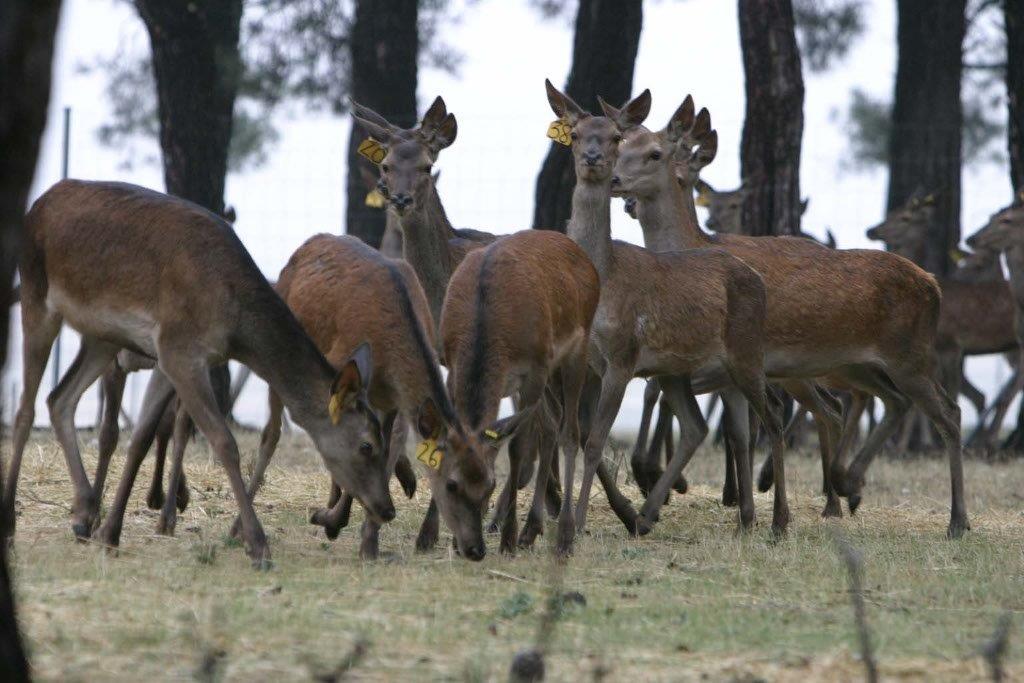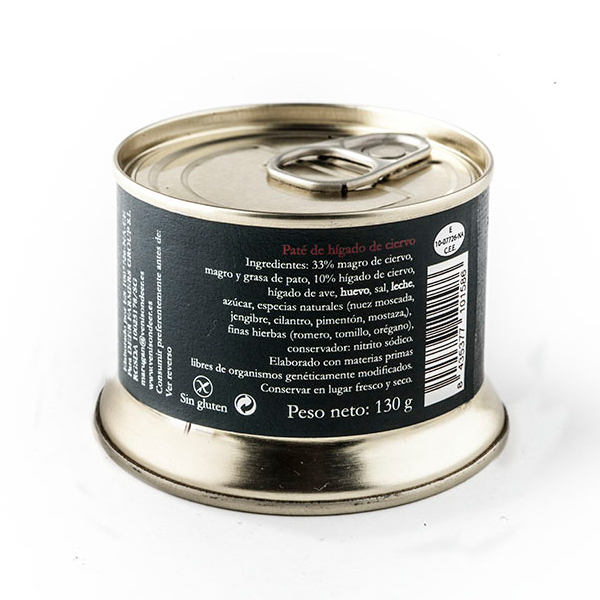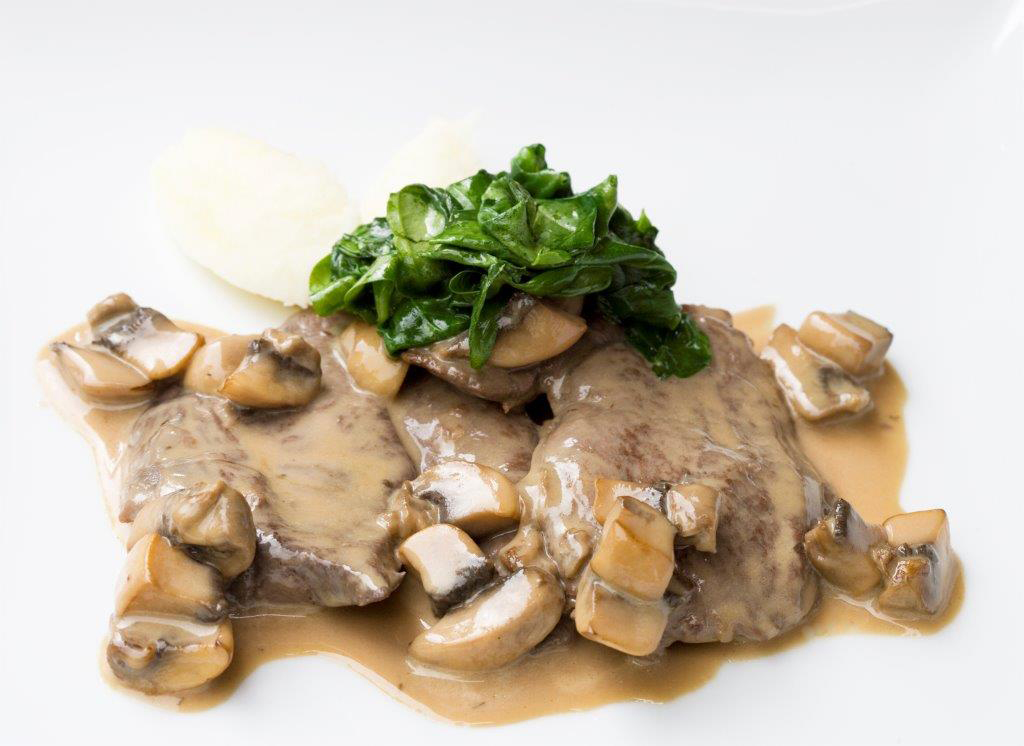We raise, prepare and market venison yearling meat
All professionals in restoration and hotel industry as well as home-made catering are demanding a real alternative to the increasingly restricted offering of meat products derived from chicken, pigs, sheep and cows.
Every day there is more awareness of the need for a healthy diet which includes high-quality meat at least once per week.

THE DEER
Our animals are of the Cervus Elaphus species, or European red deer, and we work routinely with the Scottish subspecies (scoticus) and the central European subspecies (germanicus)
We constantly make a genetic selection based on two fundamental parameters:
- Morphology: Our animals have a morphological shape and a greater muscular development than the Iberian animals, which provides better meat yields through this channel in less time.
- Nature: The constant, daily work with the animals allow for this selection parameter to be of extreme importance, since animals with skittish or excessively nervous behaviour are dangerous, difficult to manage and in the end, the stress negatively affects the quality of the meat.

VENISON YEARLING
In order to find meat alternatives to the protected and superintensive European livestock, it is not necessary to import exotic animals that are difficult to adapt, complicating handling and high production costs, such as ostriches, alligators or kangaroos.
Deer have been on the Iberian peninsula since the dawn of time. The only thing we have done has been what our prehistoric ancestors have already done, domesticate the animals, control them using enclosures, provide them food which they would naturally take from the ground and use this method to guarantee the availability of their meat when demanded by the market, not only when hunting is permitted.

SUSTAINABILITY
Innovations in traditional livestock production have focused on obtaining greater earnings from live weight in the least amount of time possible.
The industry of nutrition, genetics and animal health have invested an enormous amount of resources to get breeds with increasingly productive meat suitability.
However, very little has been researched in the search for other animal species which could be a viable meat alternative, adapted to the environment and of high quality.
European livestock production continues to use the same animal species and the same fattening systems, intensive fattening, for centuries now.
The deer is not an animal with meat suitability, its metabolism is adapted to make the most of unproductive ecosystems and it is capable of thriving with fodder and natural pastures, eliminating dependence on grain profiteering which the other typical meat supplies are subjected to.
Deer Yearling meat contains very little fat and very little cholesterol, at the same time providing more iron and proteins that other meat sources.
CONTROLLED NATURAL RAISING
This is semi-extensive livestock production, the animals are cared for throughout their reproductive cycle in parks in the open air, without using fattening sheds or cages.
However, the animals are at all times subjected to veterinary control, with a periodic vaccine and de-worming programme ensuring their health and well-being at all times.
The basic premise is that of the least amount of handling possible in order to prevent stress as much as possible

THE FEED
The animals’ feed varies depending on the season and the nutritional needs of every age group and sex.
Its basis is natural foraging, with tedded wheat or oats and different mixtures of grains depending on the energy needs of the fawns during development, pregnant females or periods of rest.
Depending on availability, we tend to provide surpluses from horticulture production from the local environment, such as red beetroot, potato, carrot or leek, a cheap source rich in vitamins and minerals which the animals appreciate
We never use growth promoters, fattening hormones or medicinalised feed.

ENVIRONMENT
The very recently unproductive ecosystem of the pine forest gives our animals shade in the summer and cover in the winter, apart from being a very sandy terrain, it hardly ever becomes waterlogged, which is why we do not have the sanitary problems that are so common in more unhealthy areas due to constant humidity.
We prefer to use sun-dried fodder produced by farmers in the local environment, avoiding fuel expenses in transportation and minimizing our carbon footprint.
With a rotation of pastures 2 times per year, we completely eliminate the creation of waste and the use of nitrogen fertilisers, since the soil absorbs animal excrement and becomes enriched by it naturally, thus completing the cycle of the circular economy.
A very efficient metabolism to make the most of the scarce resources available in nature allows the deer’s digestive system to produce very little methane in rumen fermentation, which is why the emission of greenhouse gases is very low.

SKINNING
Our products include a series of specific characteristics which clearly distinguish them from those currently existing on the market, in order to obtain deer meat of the highest quality
The raising and growth of the animals in open-air parks under veterinary control and in conditions to ensure the well-being of the animals at all times.
The thorough selection and control of the animals’ feed, made EXCLUSIVELY using pasture and natural products.
The slaughtering, which takes place in a standardised slaughterhouse, intended to avoid kicks and in the least amount of time possible, in order to give the animals the least amount of suffering and stress possible.
The skinning and preparation of products created in the cutting room and industry which comply fully with the sanitary-hygienic conditions established and controlled by the Government.
The quality of the feed throughout the entire production process results in meat with a flavour and tenderness that offers catering professionals a raw material with many possibilities in creating new recipes.
PRODUCTS CREATED
JERKY
This comes from deer raised in the open air, slaughtered at around 12 months of age in a standardised slaughterhouse, which allows the final pH of the meat to be low.
A good feed based on grains allows them to have good muscle development in the hind quarters, from which lean and tender meat is obtained. The leg is divided into three long pieces (stifle joint, top round, bottom round) so that the penetration of salt and smoke is uniform.
VENISON LIVER PÂTÉ
We can asset that this is the only deer pâté created with deer liver.
Pâté created with the meat and liver of our deer raised in a controlled, natural environment, which gives it a clearly different flavour and texture.
A unique product on the market, with a limited production, created to satisfy the most demanding consumer.
CUTS
The product is fantastic! In beauty, in colour, and aroma; the meat of the animal shows very elegantly in the jerky.
Carme Ruscalleda















